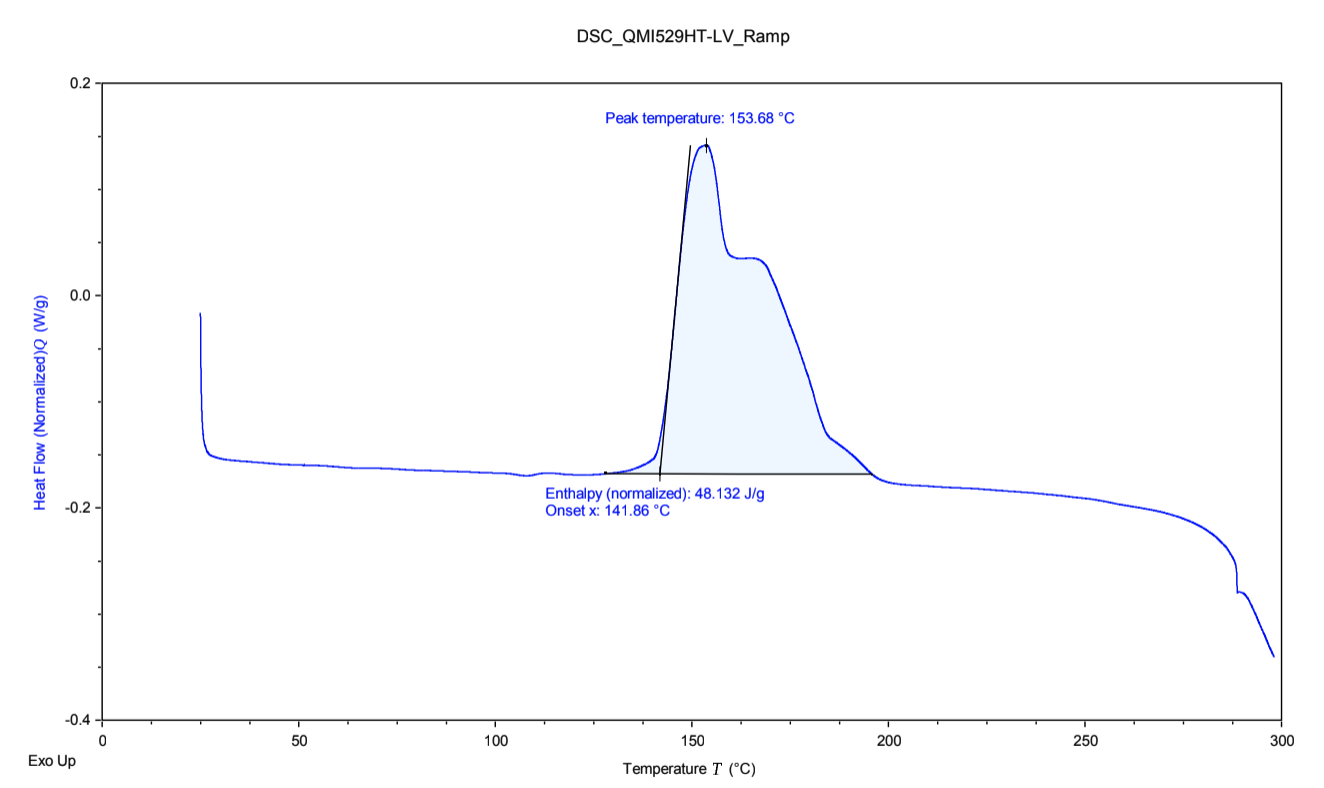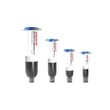LOCTITE ABLESTIK QMI529HT-LV
- Low moisture absorption
- Low stress
- Hydrophobic
Product Description
LOCTITE® ABLESTIK QMI529HT-LV is a thermally and electrically conductive, hydrophobic die attach paste with good dispensing characteristics. It exhibits low moisture absorption, excellent adhesion and low stress while also being thermally stable at 260ºC reflow temperatures. QMI529HT-LV has great adhesion on lower temperatures works great on PPF, Ag/Au finish and while it does work on Ni finish, a more custom curing schedule might be required.
LOCTITE® ABLESTIK QMI529HT-LV can be dispensed on a faster rate and is considered an upgraded version of QMI 529HT. Its excellent workability, low stress, low RBO and high reliability make it a flexible product that can also work great in Optical sensor ASIC attach. Its maximum particle size is 40um. Epoxy systems need a needle size ~5 times bigger than the max particle size therefore a ~150-200um needle would be a good starting point.
LOCTITE® ABLESTIK QMI529HT-LV conductive die attach adhesive has been formulated for use in high throughput die attach applications and successfully passes NASA outgassing, MIL-STD-883 and Method5011 standards. It has been tested in 5x5mm die and it has demonstrated exceptional die shear strength @ 270°C after being cured for 60m at 190°C.
Cure Schedule
- 30 minute ramp to 175°C + 1 hour @ 175°C
Technical Specifications
| General Properties | |
| Work life @25°C Work life @25°C Work life is the amount of time we have to work with a material until it is no longer able to be easily worked and applied on a substrate. It is based on the change in viscosity and it can rely on the application requirements. | 24 hours |
| Thermal Properties | |
| Glass Transition Temperature (Tg) Glass Transition Temperature (Tg) The glass transition temperature for organic adhesives is a temperature region where the polymers change from glassy and brittle to soft and rubbery. Increasing the temperature further continues the softening process as the viscosity drops too. Temperatures between the glass transition temperature and below the decomposition point of the adhesive are the best region for bonding. The glass-transition temperature Tg of a material characterizes the range of temperatures over which this glass transition occurs. | 36 °C |
| Thermal Conductivity Thermal Conductivity Thermal conductivity describes the ability of a material to conduct heat. It is required by power packages in order to dissipate heat and maintain stable electrical performance. Thermal conductivity units are [W/(m K)] in the SI system and [Btu/(hr ft °F)] in the Imperial system. | 8 W/m.K |
| Physical Properties | |
| Thixotropic index Thixotropic index Thixotropic Index is a ratio of a material s viscosity at two different speeds in Ambient temperature, generally different by a factor of ten. A thixotropic material s viscosity will decrease as agitation or pressure is increased. It indicates the capability of a material to hold its shape. Mayonnaise is a great example of this. It holds its shape very well, but when a shear stress is applied, the material easily spreads. It helps in choosing a material in accordance to the application, dispense method and viscosity of a material. | 4.0 |
| Viscosity Viscosity Viscosity is a measurement of a fluid’s resistance to flow. Viscosity is commonly measured in centiPoise (cP). One cP is defined as the viscosity of water and all other viscosities are derived from this base. MPa is another common unit with a 1:1 conversion to cP. A product like honey would have a much higher viscosity -around 10,000 cPs- compared to water. As a result, honey would flow much slower out of a tipped glass than water would. The viscosity of a material can be decreased with an increase in temperature in order to better suit an application | 16,000 mPa.s |
Additional Information
Recommended cure profile for QMI 529HT-LV
Curing instructions might vary per product and customer application. Some general guidelines that have worked in the past are the following:
- Make sure to have a good build quality (especially bondline thickness) to get good temp cycling and reliability
- Adhesion to Nickel can be tough, "roughened" surfaces can help with better adhesion
- 35min ramp up to 170°C (if you can go up to 175°C you should)
- Hold for 2hrs @ 170°C (up to 4hrs could have a slightly more positive effect)
Still having issues? Check the Technical data sheet or reach out to us for an alternative recommendations.

Do die attach pastes work on Silicon and Silicone?
First of all, there’s a big difference between Silicon (Si, inorganic) and Silicone (organic). It's a common misconception and typo, but a very crucial one. All die attach products are designed to have good adhesion for Silicon while almost nothing will stick to silicone, except silicone.
If the substrate is also Silicon (Si), this means no or minimum CTE mismatch vs Si, GaN and SiC die material and so no flexibility is needed. Die attach materials are typically used for bonding Si die on Cu lead frame or laminate substrates with more than 5 times the CTE of Silicon, so bonding on Si is definitely easier and less stressful.




